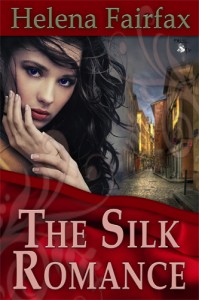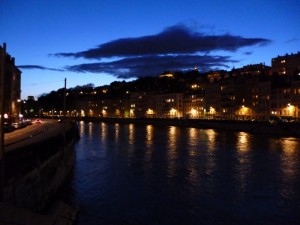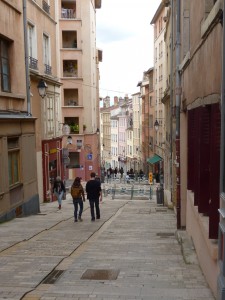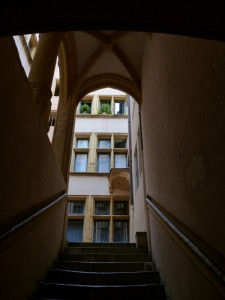Today it’s my great pleasure to welcome an exciting new author, Helena Fairfax, with a feature on the intriguing history of silk weaving…
The Silk Romance and the history of silk-weaving
Helena Fairfax
My first novel The Silk Romance is set in present-day Lyon, a city that was once the centre of a vibrant silk-weaving industry. Today, most of the looms have stopped working in the historic Croix-Rousse district, but their legacy remains as part of the fabric of the city.
I have my hero say about the disappearing silk industry: ‘We have a saying that there are three rivers at the heart of Lyon. There’s the river Rhône, the river Saône and there’s the river of tears left by the silk workers.’
Up until the fifteenth century the French imported all their silks, from places such as Asia and Italy, but the cost of importing was exorbitant. For this reason, Louis XI was determined to establish silk production in France. The first silk mill began operating in Lyon in 1466. Later, in the sixteenth century, François I allowed the mill-owners in Lyon to control the monopoly of silk production in France – and so the City of Silk was born.
In 1804 there came a development which revolutionised not just the silk industry, but the textile industry around the world. A Lyonnais named Joseph-Marie Jacquard developed a method of producing patterned fabrics using perforated cards. This caused a massive leap forward in weaving techniques – a sort of early computerised production – which spread rapidly throughout Europe and through other textile industries, including the woollen industry in West Yorkshire, where I live. (In fact perforated cards were used up until very recently in the mill in Bradford where I used to work. It was only towards the end of the twentieth century that true computerised production, including computer aided design, began to be the norm.)
After Jacquard, much of the silk production in Lyon moved to the Croix-Rousse district, which is set on a hill with sweeping panoramas of the city. The Croix-Rousse is now a UNESCO World Heritage site (as is the village of Saltaire, a former woollen mill town where I live in West Yorkshire).
In the Croix-Rousse you’ll still find many covered stone passageways known as traboules. These covered passageways enabled the weavers to carry their silk protected from the rain. The houses in the Croix-Rousse also have very high-ceilings, necessary to accommodate the tall Jacquard looms. The silk-weavers of the Croix-Rousse were known as canuts, and working conditions for these skilled artisans in the nineteenth century were dire. In 1831 the Canuts were responsible for the first organised revolt in Europe of the working classes against poor social conditions and income.
Today, one of the few silk-weavers in Lyon is Prelle, the last remaining family silk run business in the city, and the oldest. Prelle keeps a vast library of historic designs, some of which they recreated for the film Marie Antoinette. They also supply chateaux, theatres, opera houses, stately homes and fashion and interior designers for a range of other projects. I loosely based Pascha Silks, my fictional mill in The Silk Romance, on Prelle, and I’m glad to say Prelle is thriving and producing some of the most glamorous and exciting designs in Europe.
The Silk Romance is a contemporary romance, and the focus of the novel is on the relationship between the hero, Jean-Luc, and the heroine, Sophie. The silk mill and the romantic city of Lyon provide the backdrop to this relationship. If you’d like to discover more about the city and the history of silk-weaving, I can recommend the following:
This short video by Sid Goldberg which shows a some of Lyon, including a Jacquard loom in action at Prelle. Other useful sites you might like to check out are:
I hope you’ve enjoyed my short history!
And if you love a romance with a Gallic setting and a gorgeous French hero, here’s all about The Silk Romance:
 Sophie Challoner is sensible and hard-working, and a devoted carer of her father. One night her grandmother throws a ball for her in Paris…and Sophie does something reckless that she can never forget.
Sophie Challoner is sensible and hard-working, and a devoted carer of her father. One night her grandmother throws a ball for her in Paris…and Sophie does something reckless that she can never forget.
Jean-Luc Olivier is not a man to treat lightly. And so when fate takes a hand years after the ball, and reunites him with Sophie in Lyon, he is determined not to let her go a second time.
But it seems the fates are conspiring against their happiness. Jean-Luc has secrets of his own. And when disaster strikes at home in London, Sophie is faced with a choice—stay in this glamorous world with the man she loves, or return to her family to keep a sacred promise she made her mother.
The Silk Romance is available on Amazon here






Hey, Helena. Wonderful post. Great pictures. I loved your book. What a fabulous cover.
Thanks Marsha! Good to see you over here in the UK 🙂 Thanks for your lovely comment!
Helena, I love your posts and always learn from you. There’s something very romantic about silk. Thanks for this fascinating lesson. I am adding this story to my TBR list too, after Antique Love…
Thanks so much for your lovely comment, Gemma. Great to hear from you! I hope you enjoy The Silk Romance if you do read it. I tried to make the story as romantic as possible, and the romantic location certainly fits! Thanks again for coming by, and I hope all’s well with you